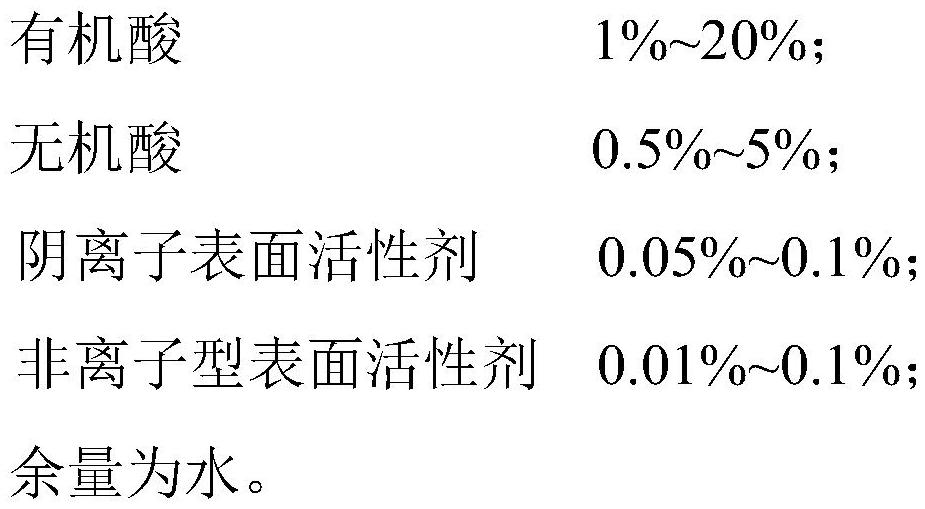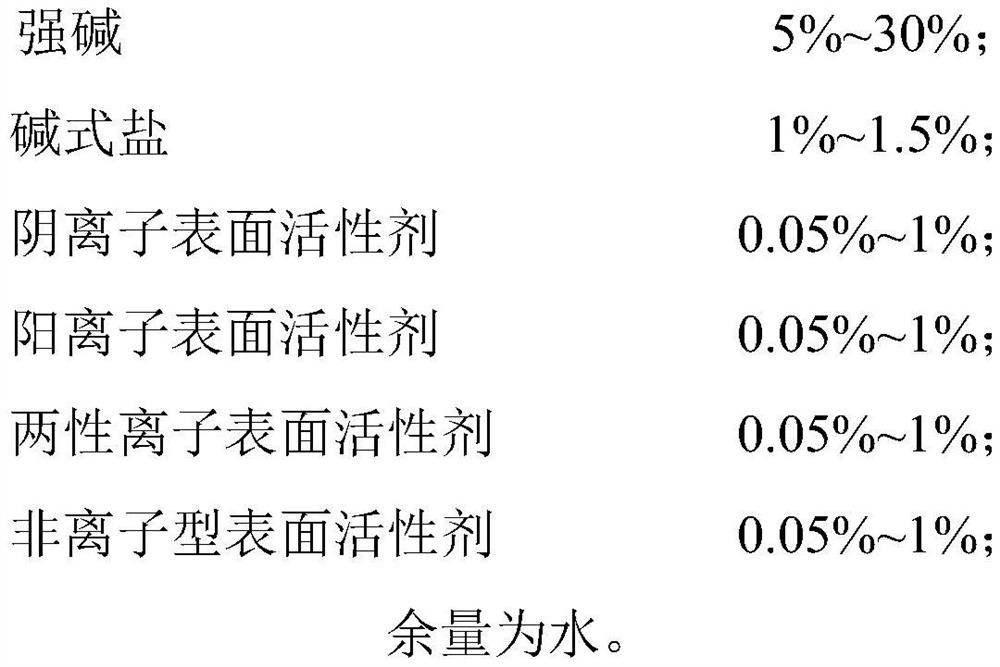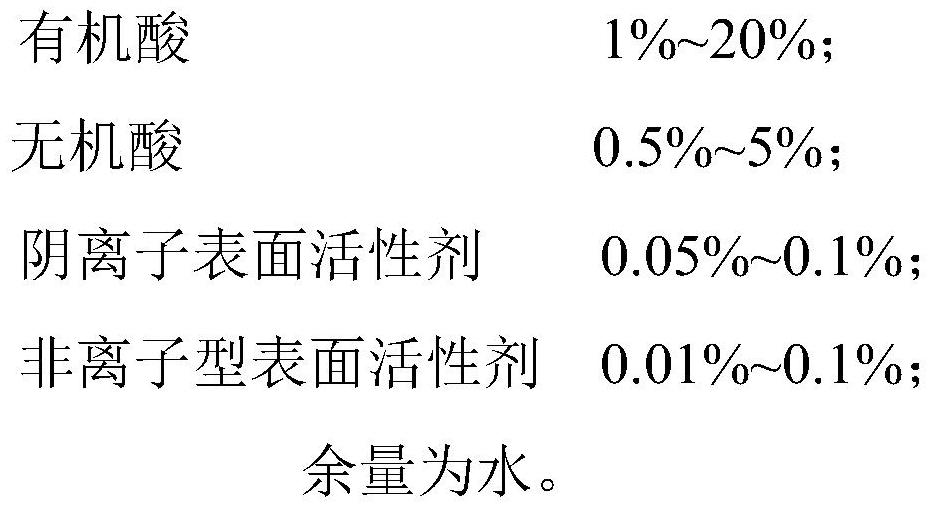Method for cleaning glass element
A component and glass technology, applied in the field of glass component cleaning, can solve the problems of glass component surface scratches, large sewage discharge, poor polishing powder removal effect, etc.
- Summary
- Abstract
- Description
- Claims
- Application Information
AI Technical Summary
Problems solved by technology
Method used
Image
Examples
Embodiment 1
[0087] Specific steps are as follows:
[0088] 1) Provide polished glass components, the polishing powder used is: cerium oxide.
[0089] 2) Soak the glass element obtained in step 1) in an aqueous solution of citric acid with a mass concentration of 8% for 30 minutes, and then take it out, wherein the soaking temperature is 25°C.
[0090] 3) The glass element obtained in step 2) is placed in an acid cleaning solution, and the first ultrasonic treatment and the second ultrasonic treatment are successively carried out; wherein, the frequency of the first ultrasonic treatment is 28KHz; the ultrasonic time is 30min, and the ultrasonic temperature 45°C; the frequency of the second ultrasonic treatment is 40KHz; the ultrasonic time is 30min, and the ultrasonic temperature is 45°C; the composition of the acid cleaning solution is as follows:
[0091]
[0092]
[0093] Among them, the nonionic surfactant is nonylphenol polyoxyethylene ether; the anionic surfactant is a mixture...
Embodiment 2
[0099] Specific steps are as follows:
[0100] 1) Provide polished glass components, the polishing powder used is: cerium oxide.
[0101] 2) Soak the glass element obtained in step 1) in an aqueous solution of citric acid with a mass concentration of 8% for 30 minutes, and then take it out, wherein the soaking temperature is 25°C.
[0102] 3) The glass element obtained in step 2) is placed in an acid cleaning solution, and the first ultrasonic treatment and the second ultrasonic treatment are successively carried out; wherein, the frequency of the first ultrasonic treatment is 20KHz; the ultrasonic time is 30min, and the ultrasonic temperature 45°C; the frequency of the second ultrasonic treatment is 70KHz; the ultrasonic time is 30min, and the ultrasonic temperature is 45°C; the composition of the acid cleaning solution is as follows:
[0103]
[0104] Among them, the nonionic surfactant is nonylphenol polyoxyethylene ether; the anionic surfactant is a mixture of sodium dod...
Embodiment 3
[0110] Specific steps are as follows:
[0111] 1) Provide polished glass components, the polishing powder used is: cerium oxide.
[0112] 2) Soak the glass element obtained in step 1) in an aqueous solution of citric acid with a mass concentration of 8% for 30 minutes, and then take it out, wherein the soaking temperature is 25°C.
[0113] 3) The glass element obtained in step 2) is placed in an acid cleaning solution, and the first ultrasonic treatment and the second ultrasonic treatment are successively carried out; wherein, the frequency of the first ultrasonic treatment is 10KHz; the ultrasonic time is 30min, and the ultrasonic temperature 45°C; the frequency of the second ultrasonic treatment is 50KHz; the ultrasonic time is 30min, and the ultrasonic temperature is 45°C; the composition of the acid cleaning solution is as follows:
[0114]
[0115] Among them, the nonionic surfactant is nonylphenol polyoxyethylene ether; the anionic surfactant is a mixture of sodium d...
PUM
 Login to View More
Login to View More Abstract
Description
Claims
Application Information
 Login to View More
Login to View More - R&D
- Intellectual Property
- Life Sciences
- Materials
- Tech Scout
- Unparalleled Data Quality
- Higher Quality Content
- 60% Fewer Hallucinations
Browse by: Latest US Patents, China's latest patents, Technical Efficacy Thesaurus, Application Domain, Technology Topic, Popular Technical Reports.
© 2025 PatSnap. All rights reserved.Legal|Privacy policy|Modern Slavery Act Transparency Statement|Sitemap|About US| Contact US: help@patsnap.com



